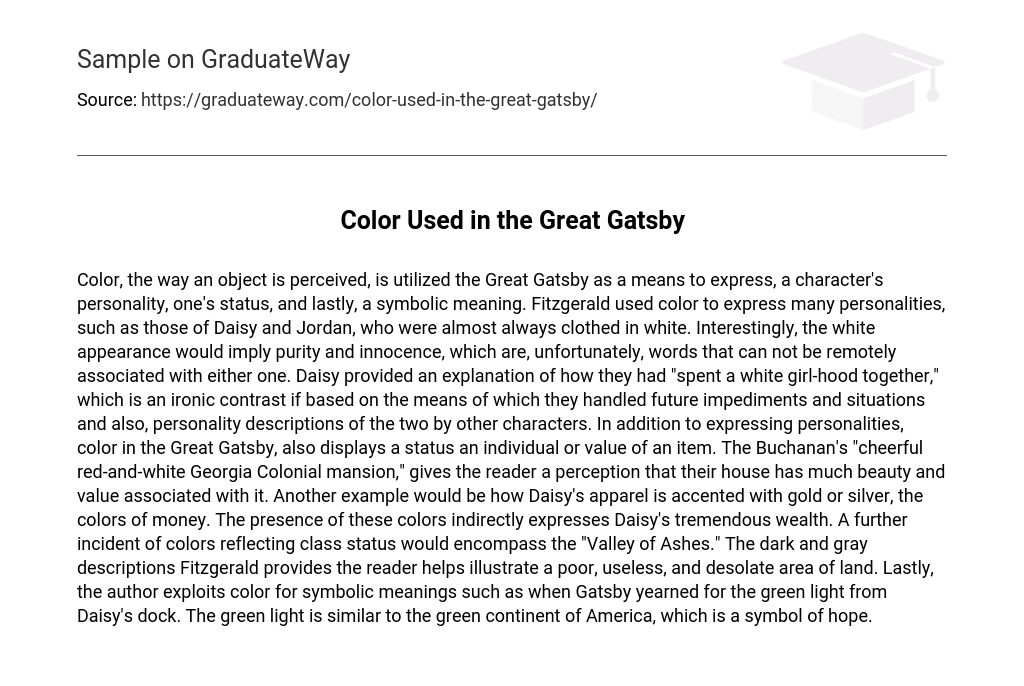In The Great Gatsby, color is used to express characters’ personalities, their status, and symbolic meanings. Fitzgerald employed color to depict various personalities, like Daisy and Jordan, who were frequently seen wearing white. Ironically, the white outfits suggested innocence and purity, which contradicted their true nature. Daisy mentioned how they had “spent a white girl-hood together,” highlighting the contrast between their past and their behavior in dealing with obstacles and situations, as well as descriptions of their personalities by other characters.
Color in the Great Gatsby serves multiple purposes, including showcasing personalities and indicating status or value. The Buchanan’s home, described as a “cheerful red-and-white Georgia Colonial mansion,” reflects the beauty and high worth associated with it. Daisy’s attire, adorned with gold or silver, symbolizes wealth and prosperity. These colors subtly communicate Daisy’s immense riches.
The use of colors in The Great Gatsby demonstrates the reflection of class status. For instance, the “Valley of Ashes” is depicted as dark and gray, representing poverty and desolation. Similarly, Fitzgerald employs color symbolism when Gatsby longs for the green light on Daisy’s dock, which symbolizes hope, reminiscent of the green continent of America.





